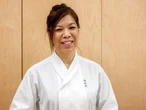For the past five years, I’ve been running Saturn, a calendar app that allows high schoolers to manage the complexities of their schedules. It’s given me a front-row seat to how time management can be overwhelming for America’s students.
Beyond the complexity of schedules, many schools employ rotations or block schedules, and students are expected to juggle their academic lives with an ever-expanding set of extracurricular activities.
We don’t always give students credit for just how complex their schedules are, but the reality is that much of it closely mirrors what students will face in their first jobs. In both phases, it’s all about scheduling the day, managing a calendar, and optimizing work-life balance—and the transition can be a challenging endeavor.
I’ve spent years helping millions of students manage their time. I’ve observed firsthand the parallels between managing high school schedules and navigating the demands of a professional career. It’s important to take lessons learned from time management in high school (because there are many!) and apply them to work and evolve with a new job.
When I dropped out of college to work on Saturn full time, I got a healthy dose of what this looked like in practice. Whether it’s juggling classes and extracurricular activities or balancing meetings and project deadlines, effective time management is paramount. Here are some key insights to consider as you make this transition.
Cultivate self-discipline within unstructured environments
The transition from the structured schedule of school to the more autonomous nature of the professional setting requires a heightened level of self-discipline. This autonomy requires proactive planning, particularly for long-term projects. Be realistic about what you can achieve within a set time frame. Break down tasks into manageable chunks and regularly reassess timelines to maintain momentum and accountability.
If you do find yourself falling behind, don’t be afraid to reevaluate your timelines and have open conversations with your coworkers about what you can deliver when, and what to prioritize.
Make the most of your free time
“Free time” is gold for productivity if you know how to handle it. It’s when you can brainstorm, get creative, and push boundaries in whatever role you’re in, whether that’s a student or a working professional.
Reflecting on my years as a high school student, I wish I had been more disciplined about delineating between free time and working time. So much time can be wasted waffling between the two that both the productive benefits of working time and the renewing benefits of free time get completely missed. Now, I’m very intentional about planning my free time, allowing me to be more intentional about what I want to achieve in my time off. (Yes, I set goals for my free time, and I rarely have regrets about that!) You can’t be a productive worker if you aren’t being attentive to your personal needs and taking time for yourself.
Master interruptions and multitasking
In school, steps are taken to minimize interruptions in the interest of supporting learning. However, in the workplace, interruptions are part of the job—meetings, emails, project deadlines, and unforeseen but necessary tasks that pop up are inevitable. Learning to manage these interruptions while staying focused on core responsibilities is essential.
Strategies such as maintaining clear task lists are helpful. Tools such as the Eisenhower Matrix can help rank and organize tasks based on importance and urgency. I set specific times to deal with email at the start and end of the day in order to get through my inbox as efficiently and productively as possible.
With practice, shifting among tasks becomes more manageable and allows for greater productivity. Organizational strategies can help ensure that even when disruptions occur, your main tasks remain in focus.
Embrace the tech, but don’t force it
Tech is your ally when it comes to managing time and staying organized. Our team looks at the newest calendar apps, task-management tools, and to-do-list products daily. There are many and some are excellent depending on your needs.
Look for tools that help support your existing productive habits and set realistic expectations when adopting a platform you’re unfamiliar with for creating new habits. Productivity tools are not one-size-fits-all. Take time to experiment and figure out what works best. Your preferences may shift over time as your job evolves, but it’s important to know that there’s usually a better option than a spreadsheet or raft of sticky notes. Think about what tech worked when you were a student and look for corresponding, if updated, solutions that can assist as you enter the working world.
Use what you know
As the 2024 class graduates and enters the workforce, remember to lean on the tools and strategies that powered you through busy or complicated times in high school and college. Whether it feels like time is flying by or like there’s not enough of it, the fact is . . . both sentiments are true. Understand that effective time management is a skill that transcends environments, so by embracing the lessons learned from managing your high school schedule, you can navigate the challenges of the workforce with confidence.
Communicate with your colleagues and don’t be too hard on yourself. Know that while this is just the beginning of your professional journey, you’re likely more prepared to handle managing your own time than you think.








No comments